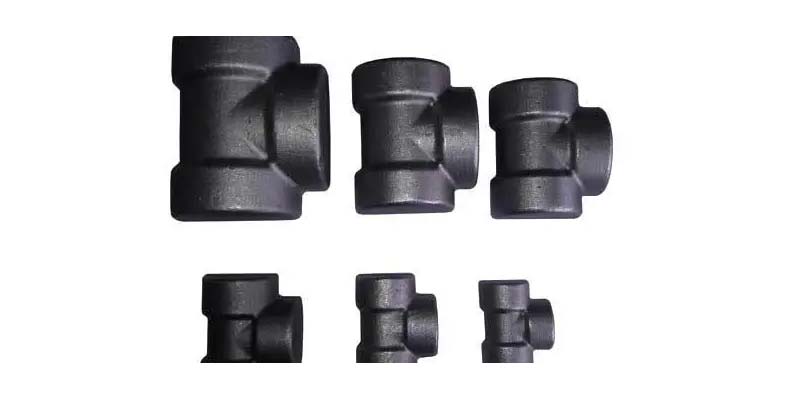- Contact Innally, Let you purchase forgings in China more favorable prices, products more assured!
- Hotline:+(86)15038323776 Email:innally@innally.com
Classification and use of forging tee
Forging tee is a commonly used pipe connection component, which has the function of connecting pipes into branch pipes in different directions. According to different uses and connection methods, forging tees can be divided into the following categories:
Welded tee: This forging tee is connected to the pipe by welding and is often used for diverting and confluence of fluids. It usually has the same caliber and wall thickness and is primarily used for fluid control and regulation in piping systems.
Flaring tee: flaring tee is also a common forging tee connection. It is through the expansion of one end of the pipe processing, and connected with the other two sections of the pipe to achieve the purpose of branch fluid. Flaring tee is suitable for small flow of branch pipelines, widely used in petroleum, chemical, natural gas and other industries.

Insert tee: Insert tee is formed by inserting a forging with a section shape of T into the inside of the main pipe to form a branch flow channel. This connection method is relatively simple, easy to install and disassemble, and is widely used in pipeline systems transporting high-pressure fluids.
Reducing tee: Reducing tee is made by forming a smaller diameter pipe on one section of pipe to connect two other sections of larger diameter pipe. This connection method is suitable for applications where the fluid velocity and flow rate need to be changed in the pipeline system, which is commonly used in the pipeline system of petroleum, chemical, metallurgical and other industries.
The forging tee plays the role of flexible connection and branch diversion in the pipeline system. According to the actual demand and specific process conditions, selecting the appropriate forging tee type and connection mode can realize the stable operation and efficient work of the pipeline system.
nannan
INNALLY mainly provides you with various types of cast and forged parts products. Welcome your inquiries! innally@innally.com
Related Articles
- Application of special steel forgings in construction industry
- The importance of steel forgings in the petrochemical and energy industries
- The application of steel forging materials in the manufacture of mechanical equipment
- Steel forging materials in the aerospace industry
- Application of steel forgings in automobile manufacturing
Search
Forging center
- Steel forgings
- Aluminium alloy forging
- Titanium alloy forging
- Stainless steel forging
- Copper forging
- Automotive forgings
- Locomotive forging
- Bicycle forgings
- Motorcycle forging
- Rigging and fasteners
- Bearing forging
- Electric power fittings
- Marine forging
- Mechanical forgings for metalworking
- Mining machinery forgings
- Marine engineering forgings
- Construction machinery forgings
Popular product

© 2025. All Rights Reserved.
